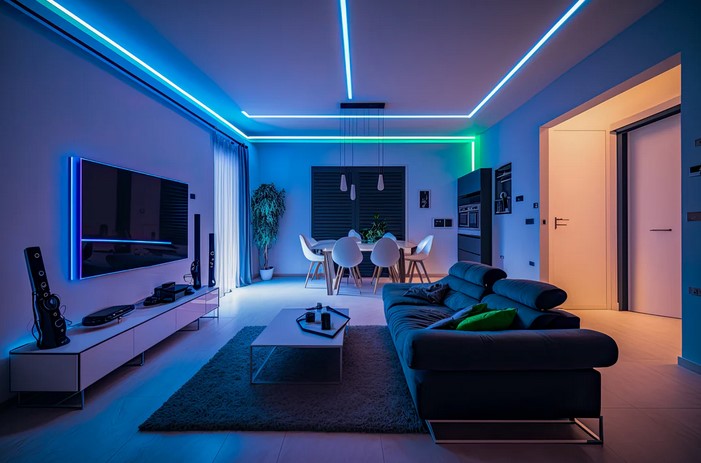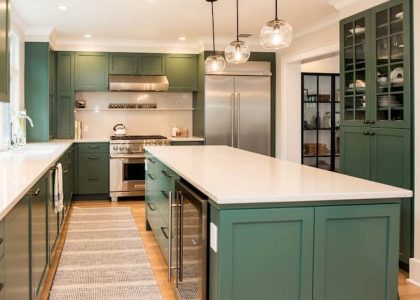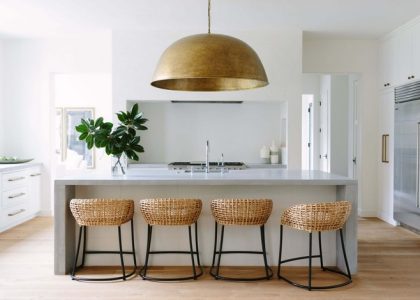
As energy efficiency becomes an increasing priority for homeowners, one of the most effective ways to reduce energy consumption and brighten your living spaces is through LED lighting retrofits. LED technology has evolved significantly in recent years, offering a more sustainable, cost-effective, and long-lasting alternative to traditional incandescent and fluorescent lighting. Whether you’re looking to upgrade a single room or your entire home, LED lighting retrofits can help you achieve both energy savings and enhanced illumination. In this article, we’ll explore how LED lighting retrofits can benefit your home, the process of retrofitting, and tips for selecting the right LED solutions for your needs.
Benefits of LED Lighting Retrofits for Your Home
LED lighting retrofits involve replacing your existing light fixtures or bulbs with energy-efficient LED options. The advantages of making this switch extend beyond just saving energy—they also contribute to improved lighting quality, lower maintenance costs, and a more sustainable lifestyle. Below are some key benefits of LED lighting retrofits:
1. Energy Savings and Lower Utility Bills
One of the most significant reasons to consider LED lighting retrofits is the energy savings they provide. LED lights are highly energy-efficient, using up to 75% less energy than traditional incandescent bulbs. They also last much longer, with a lifespan that can extend up to 25,000 hours compared to just 1,000 hours for incandescent bulbs. As a result, the initial cost of upgrading to LED lights is quickly offset by reduced electricity bills and less frequent bulb replacements.
LED lights also convert more energy into light rather than heat, unlike incandescent bulbs, which release much of their energy in the form of heat. This means your home will stay cooler, reducing the need for air conditioning and further lowering energy costs during warmer months.
2. Improved Lighting Quality
LED lights offer superior lighting quality compared to traditional options. They provide consistent brightness without flickering or dimming over time, ensuring a steady light output throughout their lifespan. Additionally, LEDs are available in a variety of color temperatures, from warm white to cool white, allowing you to customize the ambiance of each room.
Whether you want a cozy, inviting atmosphere in your living room or bright, crisp lighting in your kitchen, LED lighting retrofits provide flexibility to suit different needs and preferences. The ability to choose the right color temperature also improves the functionality of your spaces, creating better lighting for tasks such as reading, cooking, or working.
3. Environmental Impact and Sustainability
LED lighting retrofits are an environmentally friendly choice for homeowners. Since LEDs consume less power and have a longer lifespan, they contribute to a reduction in carbon emissions and waste. Traditional light bulbs need to be replaced more frequently, leading to higher levels of waste in landfills. In contrast, the longevity of LED bulbs reduces the frequency of replacements, helping to minimize waste and environmental impact.
Moreover, LEDs contain no hazardous materials like mercury, which is commonly found in fluorescent lighting. This makes them safer to handle and dispose of, further supporting a sustainable lifestyle. By choosing LED lighting retrofits, homeowners can reduce their ecological footprint while enjoying the benefits of energy-efficient lighting.
The Process of LED Lighting Retrofits
Upgrading your home with LED lighting retrofits is a straightforward process that can be done in several ways, depending on the type of fixtures you have and your specific goals. Here’s a step-by-step guide to the retrofitting process:
1. Assess Your Current Lighting Setup
Before beginning the retrofit process, assess the existing lighting in your home. Take note of the types of bulbs or fixtures currently in place, and consider how much energy they consume. If you’re unsure about the energy usage of your existing lighting, many utility companies offer tools or consultations to help you estimate your home’s lighting energy consumption.
Next, think about the specific areas where you want to improve lighting. Whether you want to upgrade your entire home or focus on certain rooms such as the kitchen, bathroom, or living room, it’s important to prioritize the areas that will benefit the most from LED retrofits.
2. Choose the Right LED Bulbs or Fixtures
Once you’ve assessed your lighting setup, choose the appropriate LED solutions for your home. Depending on your needs, you can replace traditional light bulbs with LED equivalents or retrofit your existing light fixtures with LED-compatible components.
There are several types of LED options to consider:
- LED Bulbs: If your existing fixtures are in good condition, you can simply replace incandescent or CFL bulbs with LED bulbs of the same wattage and socket type.
- LED Retrofit Kits: For older fixtures that are not compatible with standard LED bulbs, you may need an LED retrofit kit. These kits include all the necessary components to convert your existing fixtures to LED.
- Integrated LED Fixtures: In some cases, replacing your fixtures entirely with integrated LED models may be the best option. These fixtures come with built-in LEDs, eliminating the need for bulb replacements and offering modern, sleek designs.
3. Installation and Testing
Installing LED lighting retrofits is typically a simple process, especially if you’re just replacing bulbs. For more complex retrofitting, such as replacing the entire fixture or installing retrofit kits, you may want to hire a licensed electrician to ensure proper installation and avoid potential issues with wiring or compatibility.
Once your LED lights are installed, test them to make sure they work properly and meet your expectations in terms of brightness and color temperature. Adjust any dimmer switches or smart controls if necessary to achieve the perfect lighting for each room.
Tips for Maximizing Your LED Lighting Retrofit
To get the most out of your LED lighting retrofits, here are a few tips for maximizing energy efficiency and optimizing your lighting setup:
- Use Smart Lighting Controls: Many LED lights are compatible with smart home systems, allowing you to control the brightness, color, and even schedule lighting to match your needs. Consider installing smart bulbs or a smart hub to make managing your lighting more convenient and energy-efficient.
- Layer Your Lighting: Rather than relying on a single light source, consider layering your lighting by using a combination of ambient, task, and accent lighting. This will provide better functionality and enhance the overall atmosphere in each room.
- Consider Motion Sensors: In high-traffic areas like hallways or bathrooms, consider installing motion sensors to automatically turn the lights on or off. This can help save energy and ensure that lights are only used when needed.
- Maintain Your Fixtures: Although LEDs have a long lifespan, they will continue to perform best if their fixtures are kept clean. Dust and dirt can accumulate on light fixtures over time, reducing their effectiveness. Regularly clean your fixtures to maintain optimal light output.
LED lighting retrofits offer a cost-effective and energy-efficient solution to brighten your home while contributing to a more sustainable lifestyle. By upgrading your existing light fixtures to LED technology, you can enjoy long-lasting, high-quality lighting that saves money on energy bills and reduces your environmental impact. Whether you’re retrofitting a single room or your entire home, the process is simple, and the results are well worth the investment. Embrace the power of LED lighting retrofits to create a brighter, more energy-efficient home that enhances both functionality and style.


